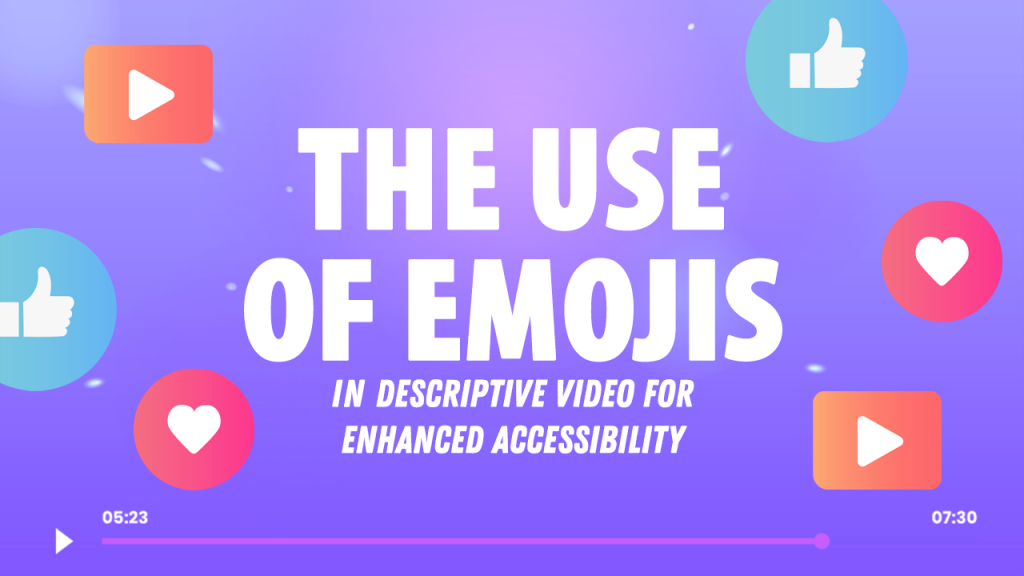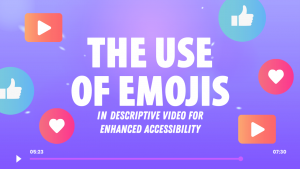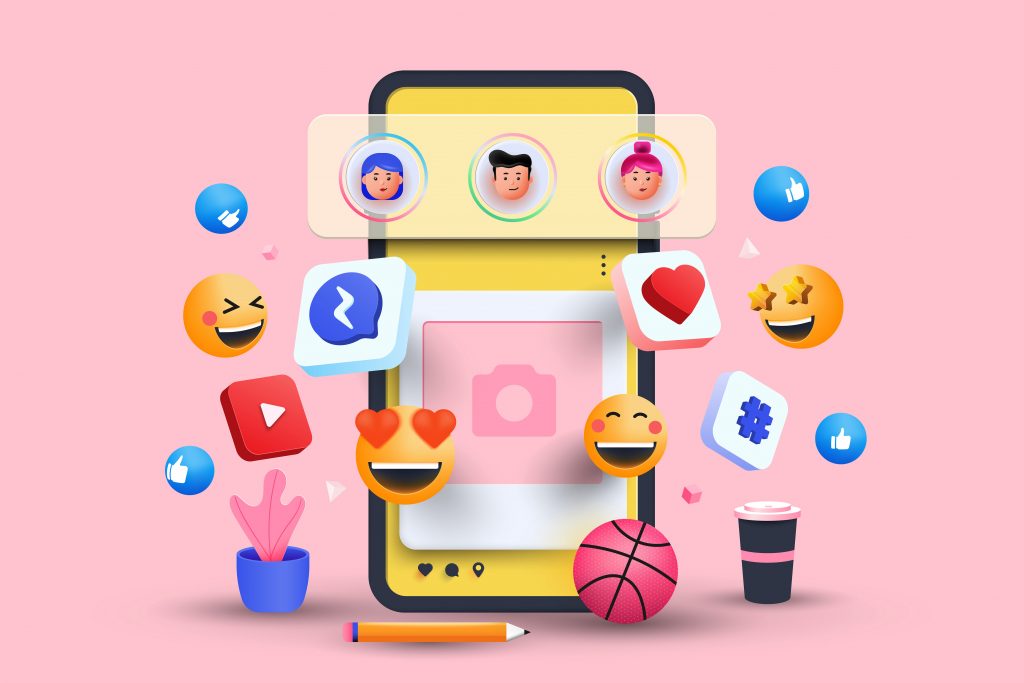The Use of Emojis in Descriptive Video for Enhanced Accessibility 🆗


Accessibility is an important issue in the digital age. It ensures that people of all abilities can access content and services online, regardless of their level of ability or disability. One way to enhance accessibility is through the use of emojis in the descriptive video. Emojis are a visually appealing way for viewers with visual impairments to understand what’s happening on screen without having to rely solely on auditory cues. They provide an additional layer of understanding that can make it easier for those with vision impairment to enjoy media content like everyone else.
In this article, we will explore how emojis can be used effectively in descriptive videos, as well as some tips for creating them. We will also discuss how emojis can be used to communicate effectively in other media, such as subtitles and captions. Let’s get started!
What is a Descriptive Video?
A descriptive video is an important tool for ensuring that people with visual impairments can access online content. It involves providing audio descriptions of what is happening in the video and can be used to supplement existing visual content. Descriptive video services are now popular in movies, television shows, and other media that have visuals.
By adding emojis to descriptive videos, viewers with vision impairments can better understand what is going on in the video without having to rely solely on auditory cues. Not only does this make it easier for them to enjoy media content, but it also adds an additional layer of visual communication that can help them to better understand and engage with the video content.

Image from Adobe Stock
How To Use Emojis Effectively in Descriptive Videos?
In order to make use of emojis in descriptive videos, one must first choose the right ones. Consider which emojis are most appropriate for the context and action taking place in the video. For example, if a character is driving a car, you may want to include the 🚗 car emoji or the 🚘 oncoming car emoji.
Additionally, consider using emojis to emphasize certain words or phrases. For example, if a character is laughing, you could include the 😂 face with tears of joy emoji to draw attention to the word ‘laughing’. By taking these steps, viewers with visual impairments can better understand the video content and engage with it on a more meaningful level. Moreover, emojis can also be used to add humor and emotion to the descriptive video which is like using closed captions in a certain way.
How To Use Emojis Effectively in Subtitles and Captions?
Emojis can also be used effectively in subtitles and captions to add clarity, emphasis, and emotion. For example, if a character is angry, you could include the ☹️ frowning face emoji or 😠 angry face emoji to emphasize the emotion. Additionally, emojis can be used for clarification and to add visual context to the dialogue or action. For example, if a character is referring to a certain object in the scene, you could include an emoji of the object to help clarify what is being talked about.
Emojis Are Effective For Kids’ Accessibility
Emojis are also an effective tool for increasing accessibility for kids. Because they are colorful and visually appealing, they can help to attract youngsters’ attention and keep them engaged in the content. Furthermore, emojis can make the text easier to understand, as well as more fun. For example, if a character is talking about a certain topic, you could add an emoji of a happy face to emphasize the words and make them more memorable. As such, emojis can be a great way to help kids with visual impairments access content on digital platforms.

Image from Adobe Stock
Tips for Creating Emojis
1. Choose the right emoji for the context
Consider which emoji best conveys the emotion or action taking place in the video and use it to add clarity and emphasis.
2. Use emojis to break up text
Breaking up the text can help to make it easier for viewers with visual impairments to follow the dialogue or action in the video.
3. Use emojis and subtitles together
Use emojis to add additional visual context and clarity to the subtitles or captions.
4. Be creative and have fun with emojis!
They are a great way to make content more enjoyable for viewers of all ages.
5. Double-check your emoji usage
Make sure it is accessible for viewers with visual impairments and that the emojis you’re using is appropriate for the context.
6. Always consider the audience when choosing emojis
Make sure they are appropriate for viewers of all ages. For example, don’t use a “drunken” emoji if the audience is children.
7. Test your content to ensure it is accessible
Test your content with viewers who have visual impairments to make sure they can understand the video and engage with the emojis.
Final Words
Using emojis to increase accessibility is an effective way for creators to ensure that their content can be enjoyed by all viewers. Not only do emojis add clarity to the dialogue and action in the video, but they also add an additional layer of emotion which can help to connect viewers with the content.
Additionally, by choosing the right emojis and using them in an appropriate manner, creators can ensure their videos are accessible to viewers with visual impairments. By taking these steps, creators can help to make the world a more inclusive place by making their content accessible to viewers of all abilities.

